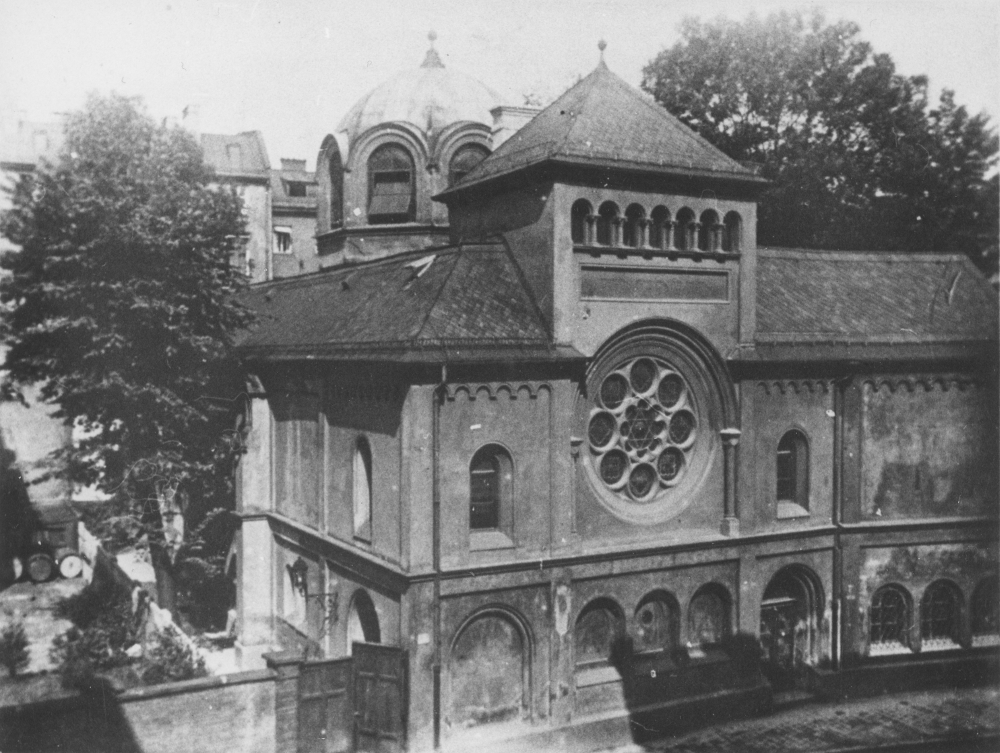Im Judentum spielt Bildung eine große Rolle. Auch im Mittelalter und der Frühen Neuzeit, als die nichtjüdische Umgebung häufig nicht alphabetisiert war, waren Fähigkeiten wie Lesen und Schreiben bei Angehörigen der jüdischen Gemeinden weit verbreitet, nicht zuletzt, um den Kontakt mit den oft weit verstreuten anderen Gemeinden aufrechterhalten, aber auch um die religiösen Texte lesen zu können. Für die Aufnahme eines jüdischen Jungen als mündiges Mitglied der Gemeinde ist das Vorlesen eines Abschnitts aus der Torah eine notwendige Bedingung.
In den deutschen Territorien wurden seit der Reformation und der Aufklärung verstärkt Schulen eingerichtet. In einzelnen Fürstentümern gab es schon früh die Schulpflicht, die sich in Bayern allerdings erst seit Anfang des 19. Jahrhunderts durchsetzte, mangels Lehrer*innen und Gebäuden aber nach wie vor keineswegs flächendeckend verbreitet war. Die sogenannten Judenedikte schufen in den deutschen Staaten die rechtliche Grundlage für die Errichtung eigener jüdischer Schulen für den allgemeinen Elementarunterricht ebenso wie für den Religionsunterricht (Bayerisches Edikt von 1813, § 32).
Glaubensliberale Jüdinnen*Juden begrüßten es, dass daneben auch die Möglichkeit bestand, Kinder unterschiedlicher Konfessionen gemeinsam unterrichten zu lassen. An der religiösen Tradition orientierte (‚orthodoxe‘) Juden*Jüdinnen hingegen lehnten solches ab. Insbesondere der damals übliche Samstagsunterricht stellte für sie ein unüberwindliches Hindernis dar: Der Weg zur Schule und das Schreiben im Unterricht widersprachen aus ihrer Sicht der Heiligung des Sabbats und machten den in dieser Zeit stattfindenden Besuch des Gottesdienstes in der Synagoge unmöglich. Hinzu kamen antisemitische Drangsalierungen durch Mitschüler*innen oder Lehrer*innen.
Um der Anhäufung von Fehlstunden oder der Abhängigkeit vom Wohlwollen der Schulbehörden beim Dispens vom Unterricht zu entgehen, entstand in München auf Initiative des Vereins ‚Ohel Jakob‘ 1924 neben der orthodoxen Synagoge in der Herzog-Rudolf-Straße 5 die jüdische Volksschule, die zunächst 34 Kinder in vier Klassen aufnahm, im Schuljahr 1927/28 waren es bereits 79. Zu denjenigen, die sich im Synagogenverein ‚Ohel Jakob‘ für die Schule engagierten, gehörten auch Angehörige der weitverzweigten Familie Feuchtwanger. Der Lehrplan entsprach den Vorschriften der Schulbehörden, es bestand aber auch das Angebot eines zusätzlichen jüdischen Religionsunterrichts.
Mit der Zunahme der Diskriminierung jüdischer Schülerinnen und Schüler suchten immer mehr Zuflucht bei der jüdischen Volksschule, insbesondere da der nationalsozialistische Stadtschulrat Josef Bauer schon seit Frühjahr 1933 gezielt gegen jüdische Schüler*innen in den Münchner Schulen vorging. Die Erste Verordnung zur Durchführung des Gesetzes gegen die Überfüllung deutscher Schulen und Hochschulen vom 25.4.1933 begrenzte den Prozentsatz jüdischer Schülerinnen und Schüler auf höheren Schulen und Universitäten auf je 1,5 %.
Die Israelitische Kultusgemeinde reagierte mit einer Ausdehnung der Volksschule auf acht Klassen und der Anmietung weiterer Unterrichtsräume. 1934/35 wurden 251 Schüler*innen, im Januar 1939 mehr als 400 Lernende unterrichtet. Das Novemberpogrom 1938 stellte in mehrfacher Hinsicht eine Zäsur dar: Die Brandstiftung bei der Synagoge hatte auch das Schulgebäude in Mitleidenschaft gezogen, Reparaturen wurden nicht erlaubt, so dass die Schule in den früheren Kindergarten in der Herzog-Rudolf-Straße umziehen musste. Drei Lehrer wurden ins KZ Dachau eingeliefert. Überdies wurde den Juden*Jüdinnen am 15.11.1938 der Besuch ‚deutscher‘ Schulen verboten. Gleichzeitig nahm die Zahl der Schülerinnen und Schüler ab, weil jüdische Familien verstärkt nach dem Pogrom emigrierten. Bis zum endgültigen Verbot jüdischer Schulen am 30.6.1942 schrumpfte die Zahl der Schüler*innen aufgrund der Deportationen vom November 1941 und April 1942 laufend, so auch in München: Von den 1939 gezählten über 400 Schülerinnen und Schülern waren im April 1942 nur noch 13 in München. Ende Juni 1942 musste wegen des reichsweiten Verbots der Unterricht an jüdischen Lehranstalten eingestellt werden.


